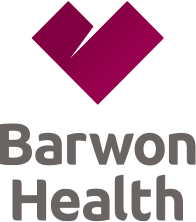Exercise during pregnancy
Becoming pregnant can be a trigger for women and their partners to take steps to improve their health and lifestyle. Moderate physical activity is good for you, is usually safe and doesn’t harm your baby’s growth and development. Pregnancy and birth are physically demanding, so a reasonable level of fitness will help with the demands on your body.
Benefits of regular exercise:
- Reduce backache, constipation, bloating and swelling
- Boosts your mood and energy levels, reducing stress, depression and anxiety
- Helps you sleep better
- Prevents excess weight gain
- Promotes muscle tone, strength and endurance – which can help with labour and baby care
You can read more in our exercise in pregnancy fact sheet, published by the Barwon Health physiotherapy department.
Safe exercise during pregnancy
It is recommended for women to be active for at least thirty minutes on at least five days each week. This can be broken down into three 10 minute bouts per day when starting out.
The ‘talk test’ can be used as a guide for exercising during pregnancy. It is safe and beneficial to work at an intensity where you can still maintain a conversation.
If you haven’t exercised recently, start slowly and progress at your own pace.
Some good options during pregnancy are walking, swimming or water based exercise, cycling on a stationary bike, low impact or antenatal exercise classes
Activities to avoid in pregnancy:
- Sports where there is a risk of falling or colliding, or those where you might be thrown off-balance, e.g. horse-riding, downhill/water skiing, gymnastics and possibly netball/basketball.
- Activities in an unsafe environment, such as high temperatures (spas or 'hot' yoga) or involve heavy equipment (e.g. scuba diving).
- Cycling in later pregnancy (apart from a stationary bike)
Precautions for exercising during pregnancy:
If you have any of the following conditions talk to your doctor before starting exercise:
- Your waters have broken (ruptured membranes)
- Pre-eclampsia /uncontrolled high blood pressure
- You have a blood clot in your leg or lungs
- You have low lying placenta (placenta praevia) in late pregnancy
- There are concerns with your baby’s growth
- You have incompetent cervix
- You have any vaginal bleeding
Cease exercising if you experience any of the following:
- vaginal bleeding
- nausea or vomiting
- feeling faint or light-headed
- strong pain, especially from your pelvis or back
- reduced movement of your baby
If you experience any leaking from the bladder or bowel or heaviness around your vagina whilst exercising, you may need to change your current program. Reduce how hard you work and the length of time of your sessions. Focus on increasing your pelvic floor muscle strength.
For more information on exercise during pregnancy, please visit pelvic floor first.
To learn more about exercise and other tips for an active, healthy pregnancy, read about our free physiotherapy education sessions.
Last Modified: Thursday, 22 June 2023
